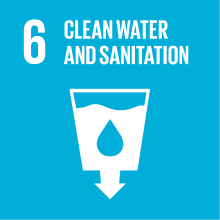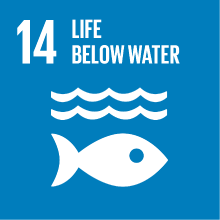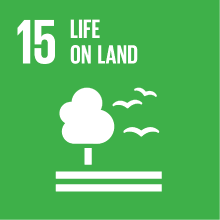INTRODUCTION TO ENVIRONMENTAL ASSESSMENT
- Academic year
- 2025/2026 Syllabus of previous years
- Official course title
- INTRODUZIONE ALLA VALUTAZIONE AMBIENTALE
- Course code
- CT0588 (AF:451432 AR:256019)
- Teaching language
- Italian
- Modality
- On campus classes
- ECTS credits
- 6
- Degree level
- Bachelor's Degree Programme
- Academic Discipline
- CHIM/12
- Period
- 2nd Semester
- Course year
- 3
- Where
- VENEZIA
- Moodle
- Go to Moodle page
Contribution of the course to the overall degree programme goals
Expected learning outcomes
1) Knowledge and comprehension
Knowledge of the terminology and fundamentals of the theoretical basis allowing the comprehension of environmental valuation and impacts assessment. In line with the learning objectives of the Course programme, this knowledge will enable students to familiarize with main procedures for the environmental impact assessment at the different scales in the context of spatial and temporal variability, thus providing a background for acting as either writer or reviewer of environmental impact statements.
Understanding the relevance of systemic and integrative approaches in the investigation, interpretation and prediction of environmental components dynamics.
2) Capacity of applying knowledge and comprehension
Ability to apply the acquired theoretical basis and regulatory approaches to real case studies such as the impacts assessment of infrastructures, conservation and remediation master plans.
Ability to evaluate and formulate alternatives aiming at reducing or eliminating adverse environmental impacts from human pressures.
3) Assessment capacity
To be able of assessing positive and negative environmental impacts along with benefits and damages brought about by the implementation of human activities through single interventions, plans and programs.
4) Communication Skills
Ability to clearly present the results of an environmental assessment using appropriate technical language, even in multidisciplinary and participatory contexts.
5) Learning Skills
Ability to consult regulations, guidelines, and technical documentation, and to independently stay updated on environmental assessment and management tools.
Pre-requirements
A fundamental aspect for successfully undertaking this course will be the acquisition of basic knowledge from the prerequisite courses concerning:
1) The structure and functioning of ecosystems and environmental systems as a whole, and the formalization of cause-and-effect relationships (including matrix calculus).
2) Environmental risk assessment.
3) Environmental policy instruments (including economic ones).
Contents
1) Introduction to the environmental evaluation: methodological approaches based on mass and energy balances, occurrence and efficiency of ecosystem services, identification and effects of environmental chemical, physical and biological stressors, assessment of environmental risks . Definition and implementation criteria of individual and social sustainability, economic sustainability, and environmental sustainability; input/output rules concerning renewable/non-renewable resources. Study cases: contaminated megasite (ILVA Taranto and Porto Marghera).
2) Introduction to the assessment of environmental impacts driven by human activities: type of human activities, conceptual frameworks for the assessment of impacts (PSR, DPSIR), identification of reference conditions of spatial-temporal scenarios. Environmental decision analysis: multicriteria analysis and its applications. Impacts matrices: definition and application to real cases: practice exercise.
3) The procedure of EIA: the project’s cycle with and without EIA; regulatory aspects from international, national and regional legislations; screening and scoping; writing an Environmental Impact Statement (EIS): organization of expert team, structure and contents; identification, estimation and ex post monitoring of impacts. Analysis of environmental impacts characteristics: direct/indirect, reversible/irreversible, continuous/discontinuous, etc.; integration of the whole set of impacts, residual impacts, mitigation and compensation actions; assessment of cumulative effects (CEA).
4) The procedures of SEA (Strategic Environmental Assessment) and IPPC (Integrated Pollution and Prevention Control): regulatory aspects from international, national and regional legislations; steps and implementation of SEA and IPPC; BAT (Best Available Technologies) and pollutants emission standards; writing an Strategic Environmental Impacts Report and a IPPC Report; Integrated Environmental Authorization (IEA). Incidence assessment (VIncA), Natura 2000 network, Directive 92/43 / EEC "Habitat" and Directive 2009/147 / EU "Birds".
5) Monetary and non-monetary evaluation procedures for environmental impact assessment; modelling impacts; guidelines and decision support tools; participatory processes to EIA, SEA and IPPC: organization, time scheduling and implementation actions.
Referral texts
Assessment methods
The evaluation takes into account: (1) conceptual completeness; (2) terminological accuracy; (3) ability to argue critically, also in relation to the cases discussed in class.
Type of exam
Grading scale
The work will be evaluated on the basis of completeness and clarity of the answers, and on the use of appropriate language and terms.
For the questions of the written exam, max 8 points each are assigned, where: 8 corresponds to excellent; 7 to very good; 6 to good; 5 to sufficient; 4 to insufficient; 3 to seriously insufficient.
For the overall evaluation of the work:
Scores in the range 18-21 range: superficial knowledge of the topics covered in the classes; unclear and lacking in technical terminology.
Scores in the range 22-25: not always in-depth knowledge of the topics covered in the classes; orderly presentation but with not always correct use of technical terminology;
Scores in the range 26-27: good knowledge of the topics covered in the classes; fair ability to organize information and present it; familiarity with technical terminology;
Scores in the range 28-30: excellent mastery of the topics covered in the classes; ability to prioritize information and correct use of appropriate technical terminology.
Honors will be awarded in the presence of excellent judgment and communication ability, and excellent understanding of the program's topics.
Teaching methods
Further information
2030 Agenda for Sustainable Development Goals
This subject deals with topics related to the macro-area "Natural capital and environmental quality" and contributes to the achievement of one or more goals of U. N. Agenda for Sustainable Development



